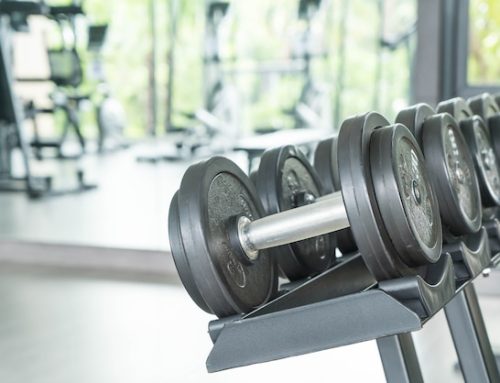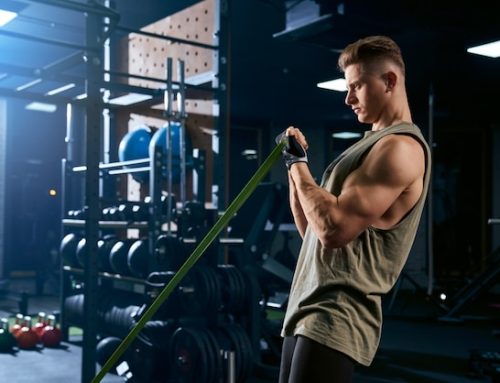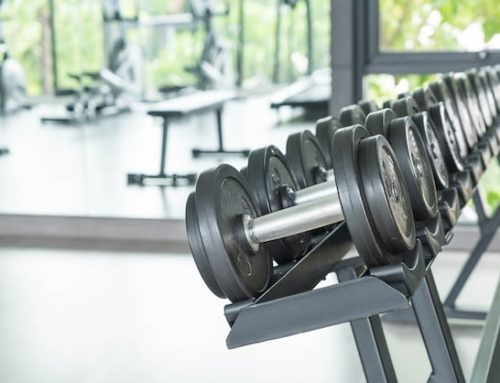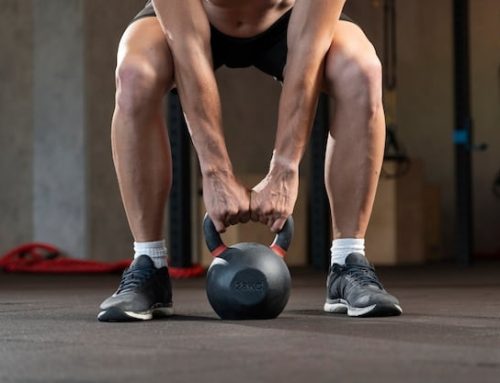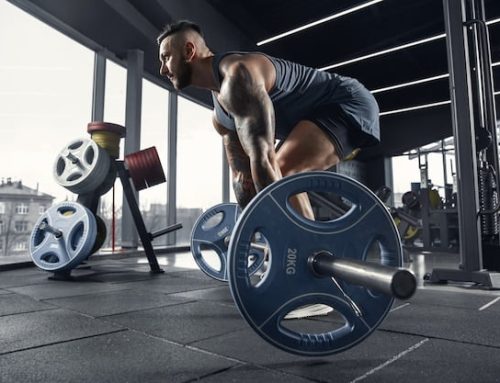Can’t feel your abs when doing ab exercises? You’re not alone, and there are a number of potential reasons why you’re facing this problem…
1. You’re hip-hinging, not ab-crunching.
One of the most common mistakes made when performing exercises like the standard sit-up or crunch, is recruiting the hip flexors instead of the abdominal muscles.
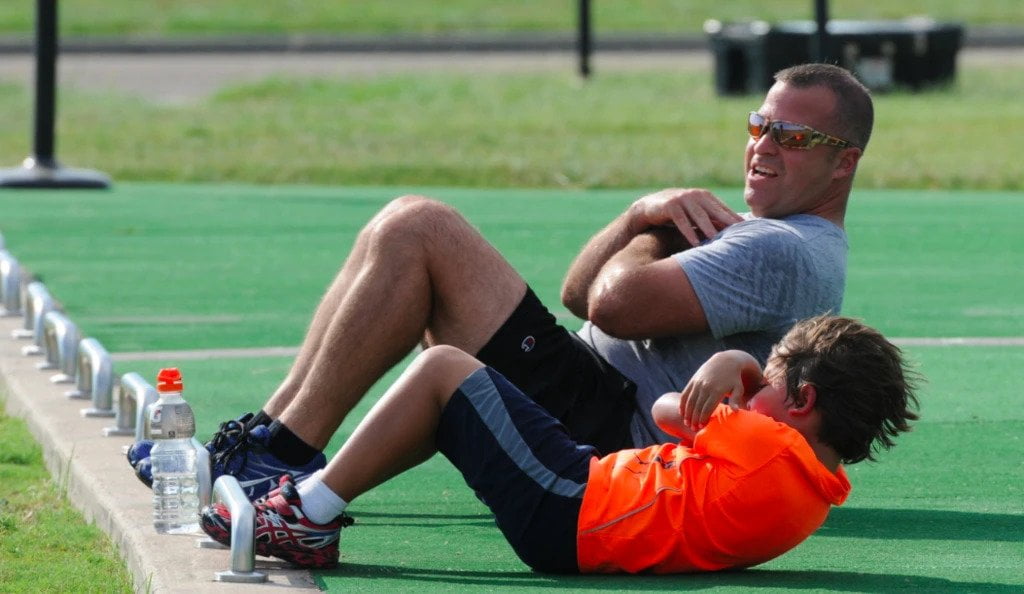
If you’re folding at the hips in order to bring your upper body off the floor and forward, all your abdominals are actually doing is keeping your upper body stable whilst your hip flexors drag your upper body towards your legs.
Fix it: When performing this type of exercise, think about rolling up instead of folding, and imagine you’re trying to make your lower rib cage touch your pelvis.
Doing some hip flexor stretches prior to your ab workout will help to relax the hips and recruit more work from the abdominals.
2. You have “lazy abs”.
Most of us spend way too much time sat down on the average day. Even if you hit the gym regularly, this sedentary lifestyle can result in lazy abs, glutes and other core muscles.

When the abs become disengaged, other muscles (such as the lower back and hip flexors) will take on the work, eventually becoming tight and overworked. As the abs get weaker and the back and hip flexors tighter, you will end up with an anterior pelvic tilt, meaning your hips tip forward and your butt sticks out.
Not only is this going to cause problems such as knee pain and back pain, it’s also going to make it harder for you to engage your abdominals when working out.
Fix it: The first thing you need to do is get in the habit of engaging the abs and glutes when doing other exercises, such as squats, deadlifts, overhead presses and so on. This will get your lazy muscles back in the habit of helping out when they’re needed.
Stomach vacuums are also going to be a massive help, as they will strengthen the deep abdominal wall, which is otherwise reasonably hard to target. Watch the video below to learn how to do stomach vacuums.

Ab Wheel Roller
Super cheap and very useful Ab roller exerciser. It is a must as a part of your own gym equipment.
3. You’re working out on a full stomach.
We’re often told that we should eat within an hour previous to our workouts if we want to maximise our performance. There’s truth to this theory, but you may want to be more careful about what, and how much, you eat.
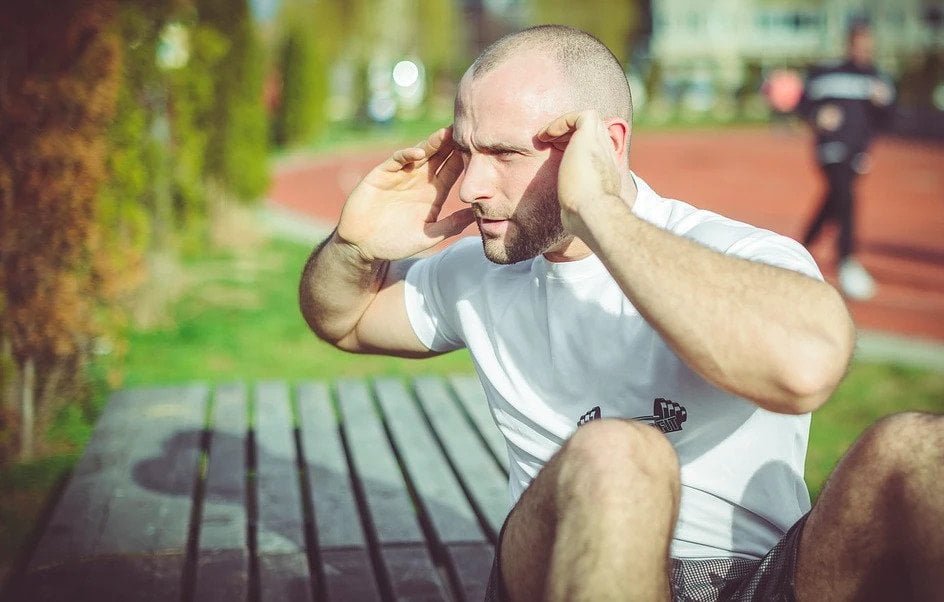
If our stomach is too full, we leave little room for ab movement. It’s also important to note that many of us have food intolerances that we’re not aware of. These intolerances can actually result in our stomach muscles feeling almost numb.
Fix it: Next time you plan on training abs, try eating a smaller meal beforehand, and perhaps consider cutting out things that could possibly be causing some kind of inflammation, such as bread, pasta or rice. You may also want to avoid man-made foods such as protein shakes/bars.
4. You’re not doing weighted movements.
For some reason, we train our abdominals in a different way than we do our other muscle groups. By that, I mean we don’t tend to use weight, and we stick to really high rep ranges.

Our ab workouts also tend to stay the same, and we don’t focus on progressive overload like we would do when trying to increase the weight we can squat or bench press.
Fix it: Consider adding weight to your ab exercises and focus on a rep range below 10, especially if you’re going for that thick, bulky ab look.
5. You’re dropping too fast on the eccentric.
This mistake is made on a lot of exercises, but is especially common with things like sit-ups and crunches. We work really hard on the way up, then relax and drop on the way down.
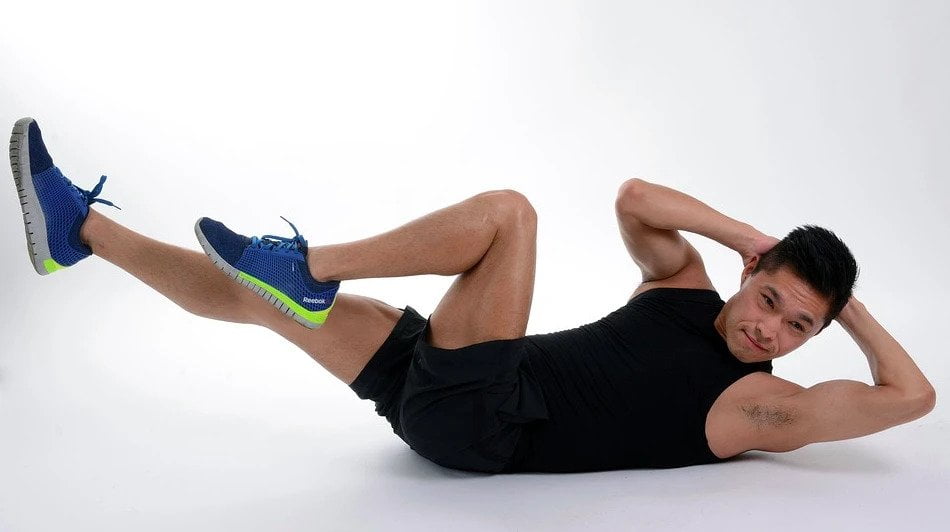
By doing this, you’re missing out half of the exercise and consistently cutting the time under tension, which is a really important factor when training for muscle growth.
Fix it: Make sure you’re lowering yourself at a controlled speed on the way down. By maintaining engagement in your abdominals throughout the eccentric as well as the concentric part of the movement, you’re massively increasing time-under-tension, causing a lot more strain on the muscle fibres and resulting in better growth.
6. Your range of motion is too short.
Don’t expect to feel much in your abs if your range of motion is limited. A basic floor sit-up is probably about 60-70% of the full range of motion your abs are capable of.
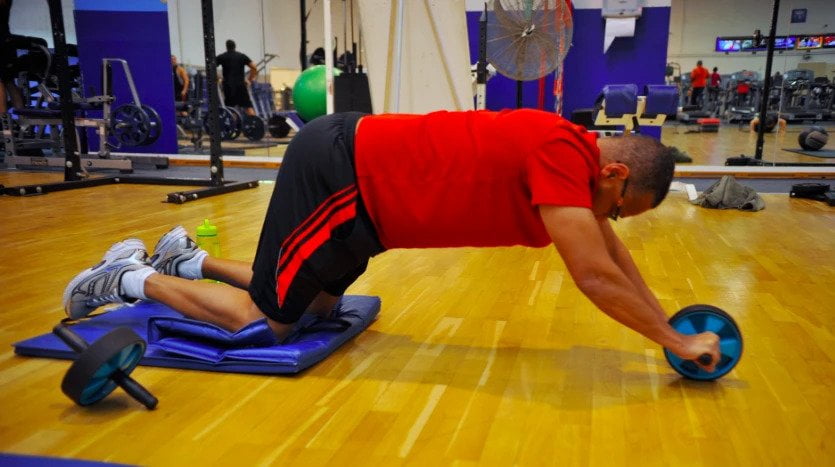
Fix it: Like time-under-tension, range of motion plays a huge role in working and breaking down a muscle. If you’re going to do crunches, consider doing them on a Swiss ball, which will allow you to stretch your abs more than you’d be able to when on the floor. And consider other exercises that allow for a bigger range of motion, such as hanging leg raises.
7. You’re not exhaling enough
One of the functions of your abs is to assist in exhalation. If you want to maximise ab contraction whilst doing ab exercises, you should try to full exhale through the concentric part of the movement (on the way up in a crunch, for example).

Ab Wheel Roller
Super cheap and very useful Ab roller exerciser. It is a must as a part of your own gym equipment.
What are the types of abs exercises for abdominal muscles
Here is a table with some effective ab exercises, along with a brief description of how to perform them:
| Exercise | Description |
|---|---|
| Crunches | Lie on your back with your knees bent and feet flat on the ground. Place your hands behind your head and lift your shoulders and upper back off the ground, squeezing your abs as you do so. Lower back down and repeat. |
| Plank | Start in a push-up position with your forearms on the ground. Hold your body in a straight line, engaging your abs and glutes. Hold for as long as you can maintain proper form. |
| Bicycle crunches | Lie on your back with your hands behind your head and your legs lifted off the ground with knees bent. Bring your right elbow to your left knee as you straighten your right leg, then switch sides. |
| Russian twists | Sit on the ground with your knees bent and feet flat on the ground. Lean back slightly and lift your feet off the ground, balancing on your sit bones. Holding a weight or medicine ball in your hands, twist your torso to the right and then to the left. |
| Mountain climbers | Start in a plank position, then alternate bringing your knees towards your chest in a running motion. |
| Leg raises | Lie on your back with your legs straight up in the air. Lower your legs towards the ground, keeping them straight, then raise them back up. |
| Reverse crunches | Lie on your back with your knees bent and feet on the ground. Lift your legs off the ground and bring your knees towards your chest, lifting your hips off the ground as you do so. |
| Side plank | Lie on your side with your forearm on the ground and your body in a straight line. Hold for as long as you can maintain proper form, then switch sides. |
Remember to engage your core and maintain proper form throughout each exercise to effectively target your abs.
Why Does My Back Hurt When I Do Abs?
One of the most common complaints from people who work out in the gym is why their back starts to hurt when they are training their abdominals. Mostly, people experience backache while doing leg raises and the plank.
Experiencing back pain while working your abs isn’t ideal. Still, it doesn’t mean you should give up doing the plank as this is a very valuable exercise as it specifically works the anti-extension properties of the abdominals. Something that is missing from most abdominal exercises.
Leg raises also challenge the lower abs, which are not fully targeted by other abdominal exercises. The lower abs are the weakest area of the abdomen because they are not commonly engaged during your typical range of movement in your normal day. It can help to add some strength training in the form of leg raises to add balance to an area of your abdominals that are vastly underused.
How the abdominals protect the spine
The abdominals help to prevent spinal extension. Having strong abs will pull the pelvis into proper alignment, which helps avoid any anterior pelvic tilt that puts pressure on the spine. You can often spot people with an anterior pelvic tilt as their bottom will stick outwards and upwards, similar to that of a duck’s tail.
For these people, performing the plank or leg raises will cause pain in their back because they will feel tremendous tension on their lumbar spine. They will perform leg raises and plank exercises without tilting their pelvis forward, resulting in an over-arc in the lumbar spine and a hunched thoracic spine, causing back pain.
Don’t rush your progress
It is common to feel some tension in your lower back while exercising your abs. However, if you do these exercises with correct spinal alignment and proper technique and still feel pain, then it may be that you are progressing through your exercise programme and pushing your abdominal training too quickly.
While it may hurt your pride to admit you need to take your training down a step, resolving back pain while working on your abs can often be this simple. Holding the plank for a shorter time and doing fewer leg raises will still work your abs, but it will not fatigue your spine or cause you back pain.
When performing leg raises, it can help to adjust your technique to take pressure off your lower back. This can be as simple as adding a slight bend to the knees or even returning to bent-knee leg raises until the issue resolves.
Restructure your lifting programme
It is essential to strike the right balance of exercises in the gym. You often see people neglecting the most important exercises that help improve your overall strength and will only work out to target what they see as their problem area – often their abdominals.
If your training programme is heavy on crunches, leg lifts and planks, make sure you include primal movement exercises that target your larger muscle groups and natural range of motion. Include deadlifts, hip thrusts and loaded carries to engage a whole range of supporting muscles. This ensures correct muscular balance and spinal alignment. If your spinal alignment is off, you can expect to feel back pain when training your abs.
Conclusion
Abdominal muscles exercises are designed to target and strengthen the muscles of your core, including the rectus abdominis, obliques, and transverse abdominis. There are many different types of ab exercises, including isometric exercises like the plank and side plank, crunch variations like the basic crunch and bicycle crunch, leg raises, twisting exercises like the Russian twist, compound exercises like mountain climbers and burpees, and cardio exercises like running and swimming.
Incorporating a variety of exercises into your workout routine is important for effectively targeting all areas of your abs, and varying the intensity and difficulty of your exercises can help prevent hitting a plateau. It’s also crucial to maintain proper form and engage your core throughout each exercise to avoid injury and effectively target your abdominal muscles.
In turn, a very important element is to perform exercises systematically and correctly, because incorrectly performed exercises can lead to health consequences, such as: back pain, joint pain or general malaise
If you can’t feel your abs when doing ab exercises, there may be a few reasons for this:
- Improper form: If you’re not performing the exercises correctly, you may not be targeting your abs effectively. Make sure you are using proper form and engaging your abs throughout the movement.
- Lack of mind-muscle connection: Sometimes, it can take time to develop a mind-muscle connection with your abs, especially if you’re new to exercise. Try focusing on contracting your abs and visualizing the movement during each repetition.
- Weak abs: If your abs are weak, you may not feel them working as much as other muscles. In this case, it may be helpful to start with beginner-level exercises and gradually work your way up to more challenging ones as your strength improves.
- Excessive body fat: If you have a high body fat percentage, it can be more difficult to feel your abs working during exercises. In this case, it may be helpful to focus on reducing your overall body fat through a combination of diet and exercise.
- Muscle imbalances: If you have muscle imbalances or weaknesses in other areas of your core, such as your lower back or hip flexors, you may not feel your abs working as much. In this case, it may be helpful to incorporate exercises that target these areas as well.
If you continue to have difficulty feeling your abs working during exercises, it may be helpful to work with a personal trainer or physical therapist to assess your form and identify any underlying issues that may be contributing to the problem.

